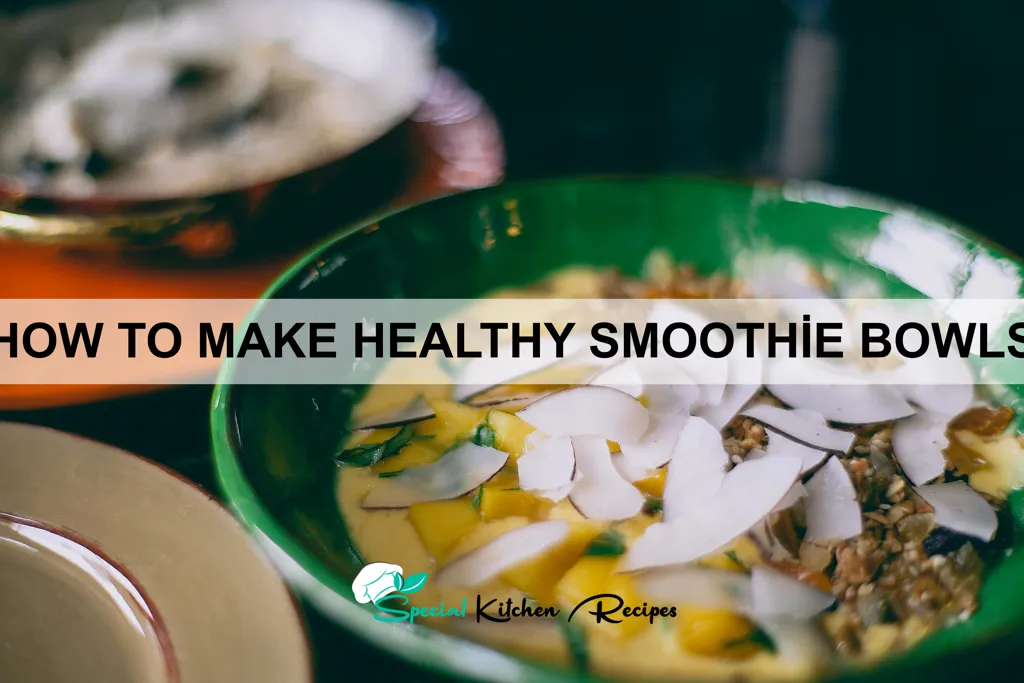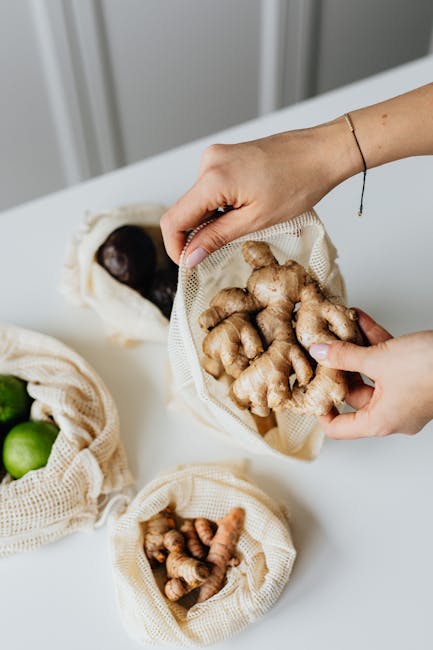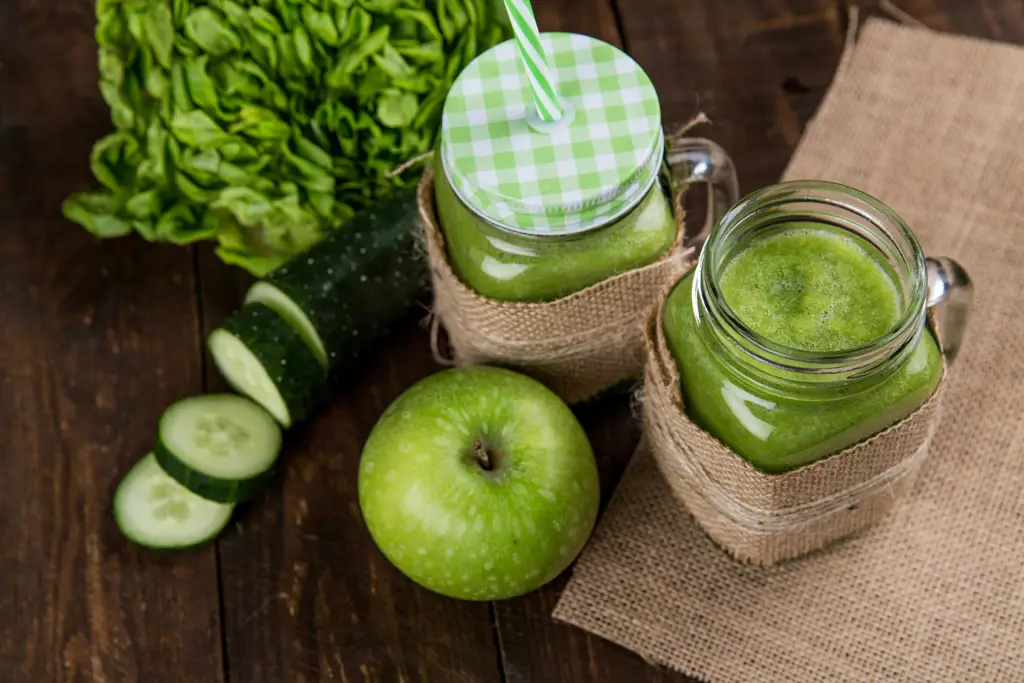Smoothie bowls, a vibrant and nutritious breakfast or snack option, have exploded in popularity in recent years, becoming a staple in health-conscious communities worldwide. While pinpointing their exact origin is difficult, their roots lie in the blending of traditional smoothie culture with the growing emphasis on mindful eating and Instagrammable food presentations. The modern smoothie bowl likely evolved from traditional blended fruit drinks consumed in various cultures for centuries. Think of the lassi in India, or the batidos in South America – these beverages, often thickened with yogurt or ice cream, share a common ancestor with the modern smoothie bowl.
The surge in popularity of smoothie bowls can be attributed to several factors. The rise of the health and wellness movement, coupled with a growing awareness of the importance of breakfast, has fueled demand for quick, convenient, and nutritious meals. Moreover, the visual appeal of smoothie bowls, often adorned with colorful toppings and intricate designs, has made them highly shareable on social media platforms like Instagram. This visual aspect has significantly contributed to their widespread adoption, with millions of posts showcasing creative variations and inspiring others to try their hand at creating these visually stunning and healthy treats. Statistics show a significant increase in searches for smoothie bowl recipes and related terms over the past five years, indicating a consistent and growing interest.
Beyond their nutritional value and aesthetic appeal, smoothie bowls hold cultural significance as a reflection of contemporary trends in food. They represent a fusion of global culinary traditions, incorporating ingredients from various parts of the world. The adaptability of the smoothie bowl allows for personalized creations based on individual dietary needs and preferences, making it a truly inclusive and versatile food option. From açai bowls reflecting Brazilian origins to pitaya bowls showcasing Southeast Asian fruits, the smoothie bowl serves as a delicious and visually stunning example of culinary globalization and the ever-evolving nature of food culture. This adaptability, combined with their nutritional benefits, positions smoothie bowls as a significant culinary trend with lasting potential.
Ingredients and Measurements
The beauty of smoothie bowls lies in their adaptability. You can tailor the ingredients to your taste and dietary needs. However, a well-balanced bowl typically includes a base of frozen fruit, a liquid element for blending, and healthy additions for texture and nutrients. Below are suggestions for a single serving, but feel free to multiply quantities for larger batches.
Frozen Fruit (1 cup): This forms the foundation of your smoothie bowl’s texture and sweetness. We recommend using a mix of fruits for a more complex flavor profile and a wider range of nutrients. For example, combine 1/2 cup frozen berries (mixed blueberries, raspberries, and strawberries are ideal) with 1/2 cup frozen mango or banana. Avoid using overly ripe or soft fruits, as these can result in a watery bowl. Frozen fruit is crucial for achieving the desired thick, spoonable consistency.
Liquid (1/4 – 1/2 cup): The amount of liquid you use will depend on the type of frozen fruit and the desired consistency. Start with 1/4 cup and add more as needed. Good liquid choices include: unsweetened almond milk, coconut water (for electrolytes), plain Greek yogurt (for added protein), or even a little bit of orange juice for a citrusy kick. Avoid using too much liquid, as this will result in a thin and runny bowl that’s difficult to eat.
Healthy Additions (to taste): This is where you get creative! A little goes a long way. Consider these options and adjust quantities according to your preference:
- Protein Powder (1-2 scoops): Adds protein and creaminess. Choose a plant-based or whey protein powder based on your dietary needs.
- Nut Butter (1-2 tablespoons): Adds healthy fats and richness. Almond butter, peanut butter, or cashew butter all work well.
- Seeds (1-2 tablespoons): Chia seeds, flax seeds, or hemp seeds provide fiber and omega-3 fatty acids.
- Oats (1-2 tablespoons): Adds thickness and fiber. Rolled oats or quick oats work best.
- Spices (a pinch): Cinnamon, nutmeg, or ginger can add warmth and flavor.
Toppings (Optional): Once your smoothie bowl is blended, get creative with toppings! These add visual appeal and extra nutrients. Suggestions include fresh fruit slices, granola, nuts, seeds, shredded coconut, cacao nibs, bee pollen, or a drizzle of honey or maple syrup (use sparingly).
Important Note: Always adjust the ingredient quantities to achieve your desired consistency and flavor. Start with smaller amounts and gradually add more until you reach your preferred texture and taste. Experiment with different combinations to find your perfect smoothie bowl recipe!
Preparation of Fruits and Vegetables (Washing, Chopping, etc.)
The success of a delicious and healthy smoothie bowl hinges on properly preparing your ingredients. This section details the crucial steps involved in washing, chopping, and preparing your fruits and vegetables for optimal blending and presentation.
Washing is paramount. Thoroughly wash all fruits and vegetables under cold running water. Scrub firm produce like apples, carrots, and potatoes with a vegetable brush to remove any dirt or pesticide residue. For leafy greens like spinach or kale, immerse them in a bowl of cold water, swish gently, and lift them out to allow excess water to drip off. Do not use soap, as it can leave behind a soapy residue that will affect the taste of your smoothie bowl.
Next comes chopping. The size of your chopped ingredients will impact the texture of your final smoothie bowl. For a smoother consistency, chop ingredients into smaller pieces, approximately ½ inch to ¾ inch. Larger pieces will create a chunkier texture. For example, if you’re using a banana, you might slice it into ½-inch thick rounds. For frozen fruits like berries, no chopping is usually necessary, unless you prefer a finer texture. Consider the type of fruit or vegetable; softer fruits like berries can be added whole if desired, while harder fruits and vegetables like apples and carrots benefit from chopping.
Quantity matters. The amount of fruit and vegetables you use will determine the overall flavor profile and nutritional value of your smoothie bowl. A good starting point is to use approximately 1-1.5 cups of fruits and vegetables combined for a single serving smoothie bowl. Feel free to adjust this based on your preferences and the specific recipe you’re following. For instance, a recipe calling for a strong berry flavor might use 1 cup of mixed berries and ½ cup of banana.
Pre-freezing is optional but beneficial. Freezing your fruits and vegetables before blending can create a thicker, icier smoothie bowl. This is particularly helpful if you are using a lower-powered blender. If freezing, ensure your fruits and vegetables are thoroughly dry before placing them in freezer-safe bags or containers to prevent ice crystals from forming. Allow frozen ingredients to thaw slightly before blending for optimal results, as completely frozen ingredients can be difficult to blend smoothly.
Proper preparation is key to a successful smoothie bowl. By following these steps, you will ensure your smoothie bowl is not only delicious but also visually appealing and packed with nutrients.
Liquid Base Selection and Preparation
The liquid base of your smoothie bowl is crucial for achieving the desired consistency. Choosing the right liquid and preparing it correctly will significantly impact the final texture and nutritional value of your bowl. Too much liquid will result in a runny, unappealing mess, while too little will leave you with a thick, difficult-to-blend mixture.
Water is the simplest and most versatile option. Start with 1/2 cup (120ml) for a single serving and adjust according to your preference and the other ingredients. Water provides hydration without adding significant calories or flavor, making it ideal for highlighting the flavors of your fruits and vegetables.
Milk (dairy or non-dairy) adds creaminess and richness. Use 1/2 cup (120ml) of your preferred milk – cow’s milk, almond milk, soy milk, oat milk, etc. Note that dairy milk will add more calories and fat than non-dairy alternatives. Consider the nutritional profile of your chosen milk based on your dietary needs. For example, almond milk is lower in calories but may be lower in protein than dairy milk.
Fruit juice provides sweetness and additional nutrients. Use 1/4 to 1/2 cup (60-120ml) of unsweetened juice; more than this can make the smoothie bowl too sweet and thin. Avoid using juices high in added sugar. Freshly squeezed juice is always the best option, but store-bought unsweetened varieties are acceptable.
Coconut water is a hydrating and electrolyte-rich option. It adds a subtle sweetness and a slightly tropical flavor. Use 1/2 cup (120ml) for a single serving. Be mindful of the natural sugar content in coconut water.
Preparation is key. Ensure your chosen liquid is chilled, especially if you’re using dairy milk, to help create a smoother, colder smoothie bowl. This also helps maintain the freshness and vibrancy of your fruits and vegetables. If using frozen fruit, you may need slightly less liquid, as the fruit will release its own juices during blending. Start with the minimum amount of liquid and gradually add more until you achieve your desired consistency.
Experimentation is encouraged! Don’t be afraid to combine different liquids to achieve unique flavor profiles and textures. For instance, a blend of water and coconut water offers hydration and subtle sweetness, while a combination of milk and fruit juice provides creaminess and natural sweetness. Always start with smaller quantities and add more liquid as needed to avoid a watery or overly thick smoothie bowl.
Blending Instructions (Speed, Time, Consistency)
Achieving the perfect smoothie bowl consistency requires attention to blending speed, time, and the initial ingredients. This section outlines the process for optimal results, whether you’re using a high-powered blender or a standard model.
Start with liquids: Begin by adding your liquid base – typically water, milk (dairy or non-dairy), or juice – to your blender. Use approximately 1/2 to 3/4 cup of liquid, depending on the desired thickness and the amount of frozen fruit you are using. Adding liquid first helps lubricate the blades and prevents the blender from seizing.
Add frozen fruits and vegetables next: Next, add your frozen fruits and vegetables. Aim for about 1.5 to 2 cups of frozen ingredients for a standard-sized smoothie bowl. More frozen ingredients will result in a thicker, icier consistency, while less will create a thinner, more liquid-like bowl. Adding frozen ingredients first is generally not recommended as they can be difficult to blend without sufficient liquid.
Low speed for initial blending: Begin blending on the lowest speed setting. This allows the ingredients to combine gently initially and prevents splattering. Use a tamper (if your blender has one) to push down the ingredients towards the blades as needed. This is particularly important if you’re using a less powerful blender.
Increase speed gradually: After about 15-20 seconds on low speed, gradually increase the speed to medium, then high. Blend for a total of 30-60 seconds, or until you reach your desired consistency. The blending time will vary based on the power of your blender and the hardness of your frozen ingredients. Listen to your blender – if it sounds strained, stop and check the consistency.
Achieving the perfect consistency: For a thick, spoonable smoothie bowl, the mixture should be relatively thick and cohesive. If it’s too thin, add more frozen fruit or ice. If it’s too thick, add a little more liquid (a tablespoon at a time) and blend again briefly. Avoid over-blending, which can lead to a watery or overly smooth texture, losing the desirable slight chunkiness of some frozen fruits and vegetables.
Troubleshooting: If your blender is struggling, try adding a little more liquid, ensuring all ingredients are near the blades, and using the tamper to push down ingredients. If your smoothie bowl is still too thick or icy after several attempts, consider using slightly less frozen fruit next time. Always exercise caution when using a high-powered blender.
Topping Suggestions and Preparation
The beauty of smoothie bowls lies in their customizability. Toppings add texture, flavor, and vital nutrients, transforming a simple smoothie into a satisfying and visually appealing meal. Prioritize fresh, whole-food toppings whenever possible to maximize the nutritional benefits of your bowl.
Fruits: Fresh berries (1/2 cup – 1 cup) are a classic choice, offering sweetness and antioxidants. Consider blueberries, raspberries, strawberries, or a mix. Sliced bananas (1/2 – 1 medium banana) add creaminess and potassium. Mango chunks (1/2 cup) provide sweetness and vitamin C. Remember to chop fruits into bite-sized pieces for easy eating.
Nuts and Seeds: A sprinkle of nuts and seeds (1-2 tablespoons) provides healthy fats, fiber, and protein. Choose from chopped almonds, walnuts, pecans, chia seeds, flax seeds, or pumpkin seeds. Be mindful of portion sizes as these are calorie-dense. Toasting nuts and seeds beforehand enhances their flavor and adds a satisfying crunch.
Granola: Homemade granola is the best option, allowing you to control the ingredients and sugar content. Store-bought granola can be high in sugar, so check the nutrition label carefully. Use 1/4 – 1/2 cup, depending on your preference and the other toppings.
Other Toppings: A drizzle of honey or maple syrup (1-2 teaspoons) can add sweetness if needed, but use sparingly. A dollop of coconut yogurt (2-3 tablespoons) adds creaminess and probiotics. Shredded coconut (1-2 tablespoons) adds tropical flavor and texture. Cocoa nibs (1 tablespoon) offer a rich chocolatey flavor and antioxidants. Consider adding a sprinkle of cinnamon (1/4 teaspoon) for warmth and spice.
Preparation Tips: Wash all fruits and vegetables thoroughly before using. Chop fruits and vegetables into bite-sized pieces for easy consumption. Toast nuts and seeds in a dry pan over medium heat for a few minutes until fragrant. If using homemade granola, ensure it is completely cooled before adding it to your bowl. Arrange toppings artfully for an aesthetically pleasing presentation. Remember to consider dietary restrictions and preferences when choosing and preparing your toppings.
Storage: Prepare your toppings in advance and store them separately in airtight containers in the refrigerator. This will save you time and effort when assembling your smoothie bowl. Avoid adding delicate toppings like berries until just before serving to prevent them from becoming soggy.
Assembly and Presentation
With your base and toppings prepped, it’s time to assemble your masterpiece! Begin by placing 1-1.5 cups of your chosen frozen fruit base (e.g., blended frozen berries, mango, or banana) into a bowl. The amount will depend on the size of your bowl and your desired thickness. A smaller bowl will require less, while a larger bowl will need more to create a visually appealing and substantial base.
Next, carefully pour your liquid base (e.g., milk, yogurt, or juice) over the frozen fruit. Start with 2-4 tablespoons and gently stir to combine. You want the liquid to just barely moisten the frozen fruit, creating a slightly soft but still textured base. Avoid adding too much liquid, as this can result in a watery, runny smoothie bowl. Add more liquid only if absolutely necessary to achieve the desired consistency.
Now comes the fun part: layering your toppings! Consider both visual appeal and nutritional balance. A good rule of thumb is to vary textures and colors. For example, you might start with a sprinkle of 1-2 tablespoons of granola for crunch, followed by a scattering of 1/4 cup of fresh berries (such as raspberries, blueberries, or strawberries) for sweetness and antioxidants. Then, add a dollop of 1-2 tablespoons of nut butter for healthy fats and protein.
To elevate your presentation, consider incorporating a variety of textures and colors. Think about adding thinly sliced fruits like kiwi or bananas for visual contrast. A sprinkle of shredded coconut adds both flavor and visual interest. Seeds such as chia or hemp seeds provide extra nutrients and a pleasing texture. A drizzle of honey or maple syrup can add a touch of sweetness, but use sparingly to maintain a healthy balance.
Arrange your toppings artfully. Don’t just dump them on top! Consider creating patterns or designs. A simple swirl of nut butter or a carefully placed arrangement of berries can transform your smoothie bowl from a simple breakfast to a visually stunning culinary creation. Remember, the goal is to create a bowl that is both delicious and aesthetically pleasing.
Finally, photograph your creation! Smoothie bowls are incredibly photogenic, and sharing your healthy and beautiful breakfast on social media can inspire others to try making their own. Once you’ve captured the perfect shot, enjoy your delicious and nutritious smoothie bowl immediately for optimal flavor and texture.
Recommendations
For optimal enjoyment and nutritional benefit, we recommend consuming your smoothie bowl immediately after preparation. This ensures the freshest flavor and prevents the fruit from oxidizing and browning. However, if you need to prepare ahead, store the individual components (fruit, yogurt, etc.) separately in airtight containers in the refrigerator for up to 2 days. Assemble the bowl just before serving.
Serving suggestions are endless! Experiment with different toppings to personalize your bowl. Consider adding a drizzle of honey or maple syrup for extra sweetness (adjust according to your dietary needs). Nuts, seeds, coconut flakes, granola, and fresh berries all make excellent additions, providing added texture and nutrients. A sprinkle of chia seeds or flax seeds will boost the fiber and omega-3 fatty acid content.
To enhance the nutritional profile, consider incorporating ingredients rich in protein and healthy fats. Greek yogurt or nut butter are excellent choices for boosting protein, while avocado or nut butters add healthy fats, increasing satiety and nutrient absorption. Remember to adjust the quantity of these ingredients to control the overall calorie count.
A typical smoothie bowl (approximately 1.5 cups) might contain approximately 300-500 calories, depending on the ingredients used. Nutritional content will vary widely based on the specific recipe. However, a well-balanced smoothie bowl can be a good source of vitamins, minerals, fiber, and antioxidants. For a more precise nutritional breakdown, use a nutrition calculator and input the exact ingredients and quantities you used.
Smoothie bowls pair beautifully with a variety of complementary dishes. They make a great light breakfast or a refreshing midday snack. Consider pairing your smoothie bowl with a side of whole-wheat toast or a small portion of scrambled eggs for a more substantial meal. For a lighter option, enjoy it alongside a cup of herbal tea or a small side salad.
Proper storage is crucial to maintain freshness and prevent spoilage. Store leftover smoothie bowl components separately in airtight containers in the refrigerator. Do not store assembled smoothie bowls for extended periods, as the texture and flavor may deteriorate. Consume within 24 hours of assembling the bowl for optimal quality.





